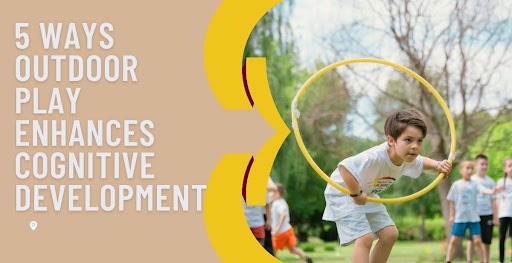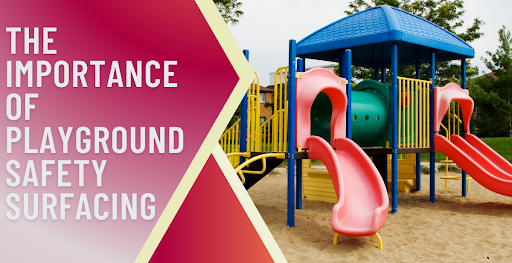Sand vs. Pea Gravel: Which Is Better for Playgrounds?
Compare sand vs. pea gravel for playgrounds. Discover safety, maintenance, cost, and which surface suits your play area best.

%2520Which%2520Is%2520Better%2520for%2520Playgrounds.png)
Choosing the right surface for a playground is crucial for safety and creating a fun environment for kids. The surface also impacts the effort needed to keep the area clean and safe.
Sand and pea gravel are two widely used materials with distinct benefits and drawbacks. Understanding these differences will help you pick the best option for your playground.
Understanding Playground Surfacing Options
Playground surfaces are key in cushioning falls and influencing children's play. Loose-fill materials like sand and pea gravel are popular choices because they are affordable and simple to install.
Both options offer unique benefits that suit different needs. However, each also comes with its own set of challenges to consider.
What Is Sand?
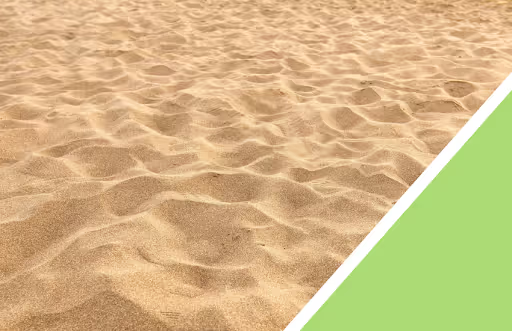
Sand is made up of fine, loose grains of rock or minerals. It has a soft texture that is easy to mold and shape. Children often enjoy digging and building with sand during play. Playground sand is specially cleaned and graded to ensure it is safe for kids.
What Is Pea Gravel?
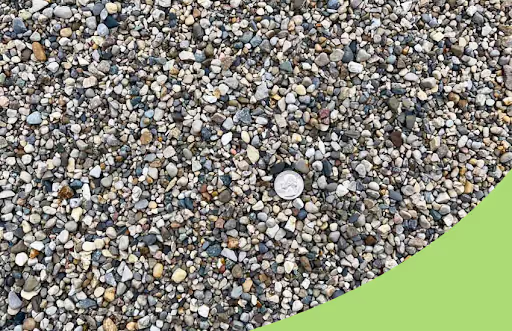
Pea gravel is made of small, smooth stones roughly the size of peas. It allows water to drain quickly, preventing muddy areas. While firm to walk on, pea gravel still provides some cushioning for falls. This makes it a practical surface for many playgrounds.
Sand vs. Pea Gravel: What's the Difference?
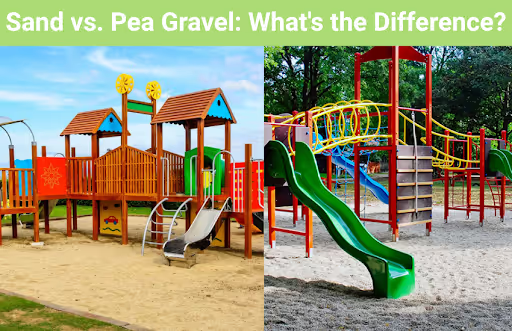
Understanding the key differences between sand and pea gravel can help you choose the best surface for your playground. Below are essential factors to consider, from safety to environmental impact:
Safety Considerations
Sand provides good cushioning for falls but tends to compact over time, which lowers its ability to absorb impact. It can also trap debris or animal waste, making regular cleaning necessary to keep the area safe.
Pea gravel drains water quickly and remains loose, but its small stones can be a choking risk for very young children. Additionally, pea gravel can be uncomfortable for kids walking barefoot or running.
Maintenance and Longevity
Sand requires frequent raking and topping up to keep the surface level and safe for play. Heavy rain or wind can wash away sand or cause it to mix with soil, leading to more maintenance.
Pea gravel lasts longer and needs less frequent replacement because it resists weathering better. However, it can spread beyond the playground boundary and may require occasional raking to stay contained.
Accessibility and Inclusivity
Sand can be challenging for wheelchairs and strollers to move through because it shifts underweight. It may also create dust, which can be uncomfortable or cause allergies for some children.
Pea gravel is firmer but still not ideal for many mobility devices, making it hard for some kids to navigate. Compared to solid surfaces like rubber, both materials are less accessible for inclusive play.
Cost Comparison
Both sand and pea gravel are affordable options for initial playground installation. However, sand can become more expensive over time due to the need for replenishing and cleaning.
Pea gravel tends to last longer and requires less maintenance, which may lower costs in the long run. Budget considerations should include both upfront and ongoing expenses.
Environmental Impact
Sand is a natural material that can be sourced responsibly, but often needs frequent replacement, which affects sustainability. Pea gravel is durable and reusable, resulting in less waste over time.
Both materials are non-toxic and safe when properly maintained. Choosing either surface with care can minimize environmental impact.
Best Uses for Sand in Playgrounds
Sand is an excellent choice for play areas focusing on sensory and creative activities. Its texture and softness make it a favorite for children's exploration and imaginative play.
- Perfect for digging and sensory play zones where children can explore textures and develop fine motor skills.
- Creates a soft, cushioned surface that helps reduce injury risks under swings, slides, and climbing structures.
- Encourages creative play by allowing kids to build castles, shapes, and tunnels.
- Easy to mold and shape, making it great for interactive and imaginative activities.
- Adds a natural, inviting element to playgrounds that appeals to children's curiosity.
Best Uses for Pea Gravel in Playgrounds
Pea gravel is a versatile surface that performs well in areas where drainage and durability are essential. It is advantageous in spots that see heavy use or wet conditions.
- Excellent for areas requiring good drainage, such as under swings, slides, and climbing equipment.
- Effectively handles water runoff, keeping the playground surface dry and safe.
- Prevents mud buildup, making it ideal for playgrounds in wet or rainy climates.
- Reduces dust compared to other loose-fill materials, improving cleanliness and air quality.
- Durable and low-maintenance, suitable for high-traffic play zones that need long-lasting surfaces.
Factors to Consider When Choosing Playground Surfacing Materials
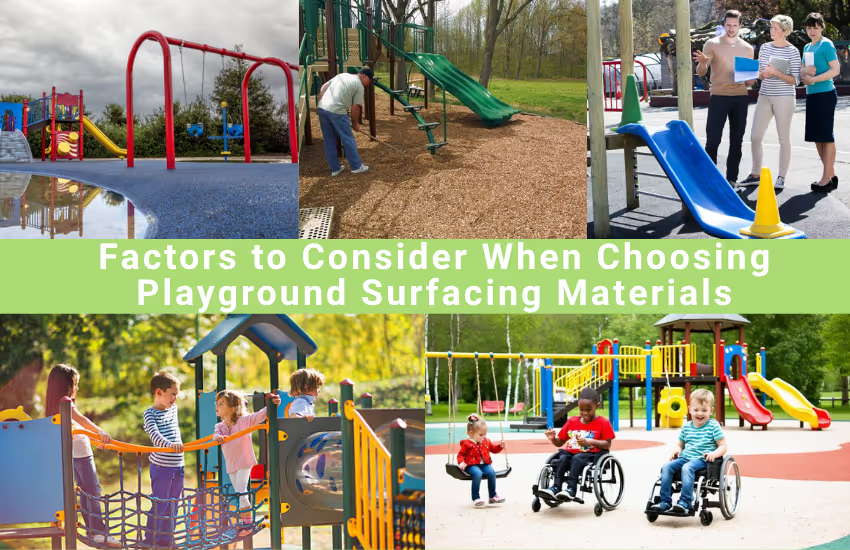
Selecting the right playground surface involves weighing several essential factors to ensure safety, accessibility, and long-term value. Keep these key points in mind when making your decision:
Age and Safety Needs
Consider the age range of children who will use the playground to choose the safest surface. Younger kids benefit from softer materials that cushion falls better.
Accessibility
Think about whether the playground needs to support wheelchairs, strollers, or other mobility aids. Some surfaces allow more effortless movement and more inclusive play.
Climate and Drainage
Pea gravel offers excellent drainage, making it ideal for wet or rainy areas. Sand can wash away or compact after rain, requiring more upkeep.
Maintenance Requirements
Evaluate how often you can maintain the surface through cleaning, raking, or topping up material. Some surfaces need more frequent attention than others.
Budget Considerations
This factor affects both the upfront installation costs and the ongoing upkeep expenses. Choose a surface that fits your budget while meeting your safety and usability needs.
Make the Right Playground Surface Choice Today
Both sand and pea gravel come with their own advantages and drawbacks. Sand provides a soft surface that encourages creative play but requires more regular maintenance.
Pea gravel offers excellent drainage and durability, but it can feel rough to walk barefoot. The best choice depends on the specific needs and uses of your playground.
For expert advice and quality playground surfacing, whether you choose sand or pea gravel, trust Park N Play Design. They specialize in creating safe, fun spaces that kids love to play in.


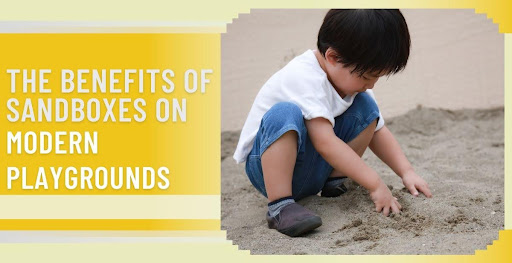
.jpeg)
.jpg)
.jpg)
.jpeg)
